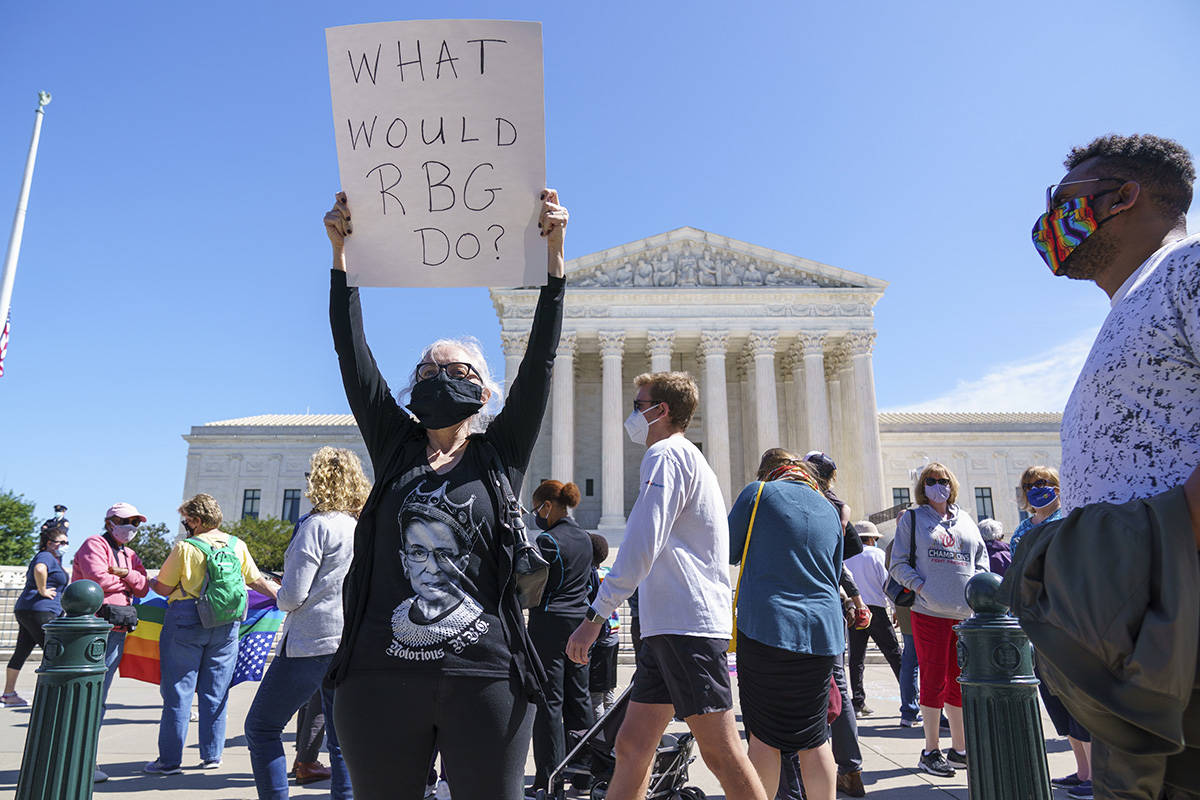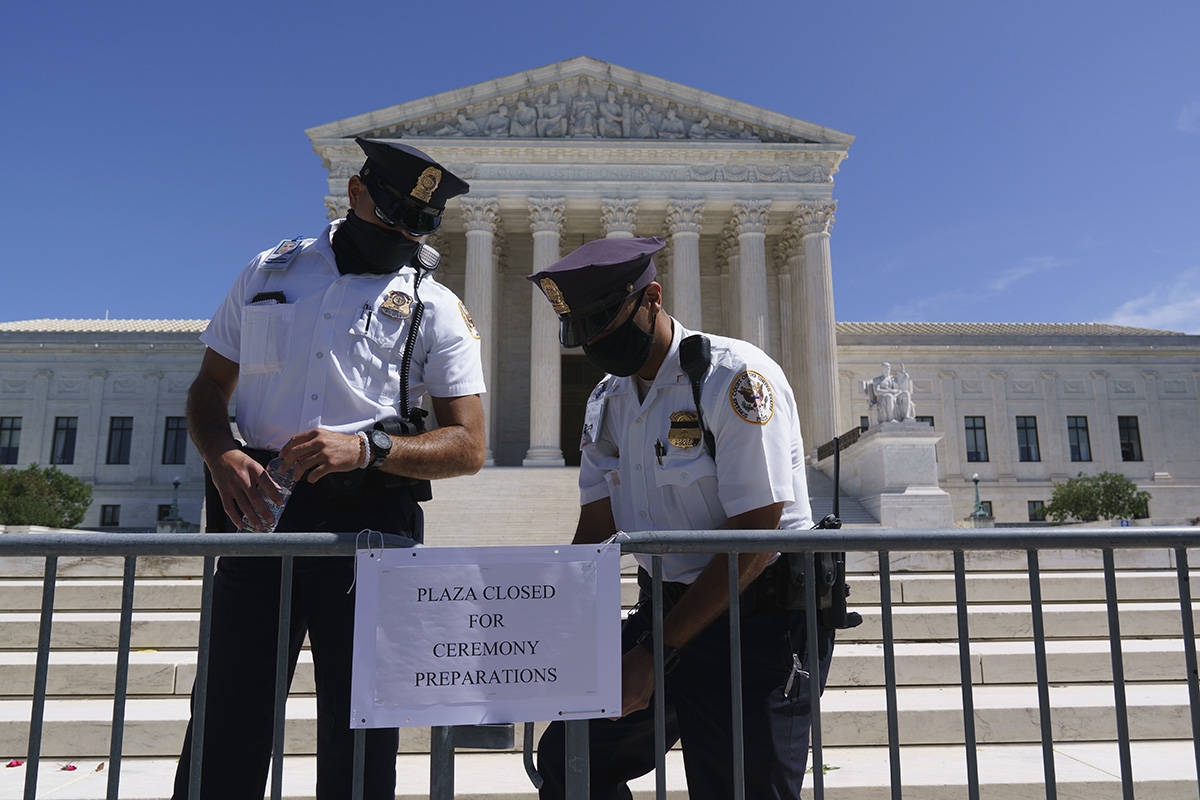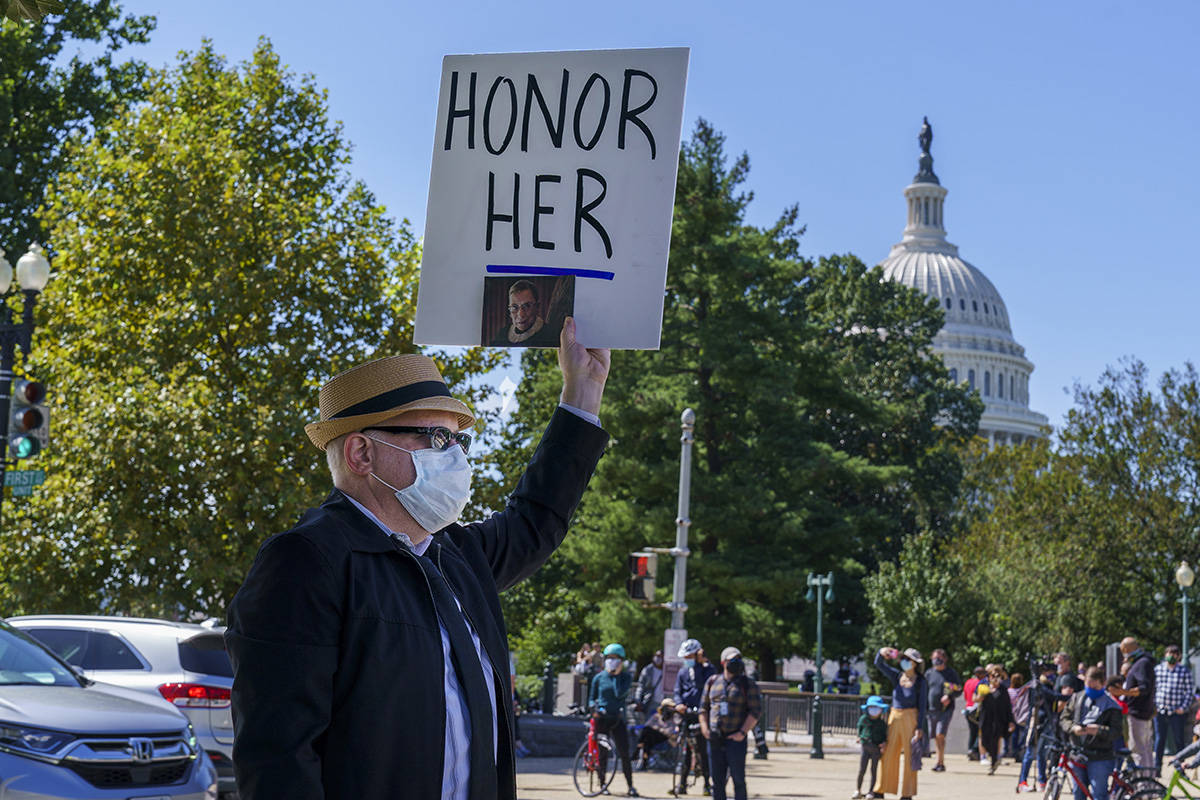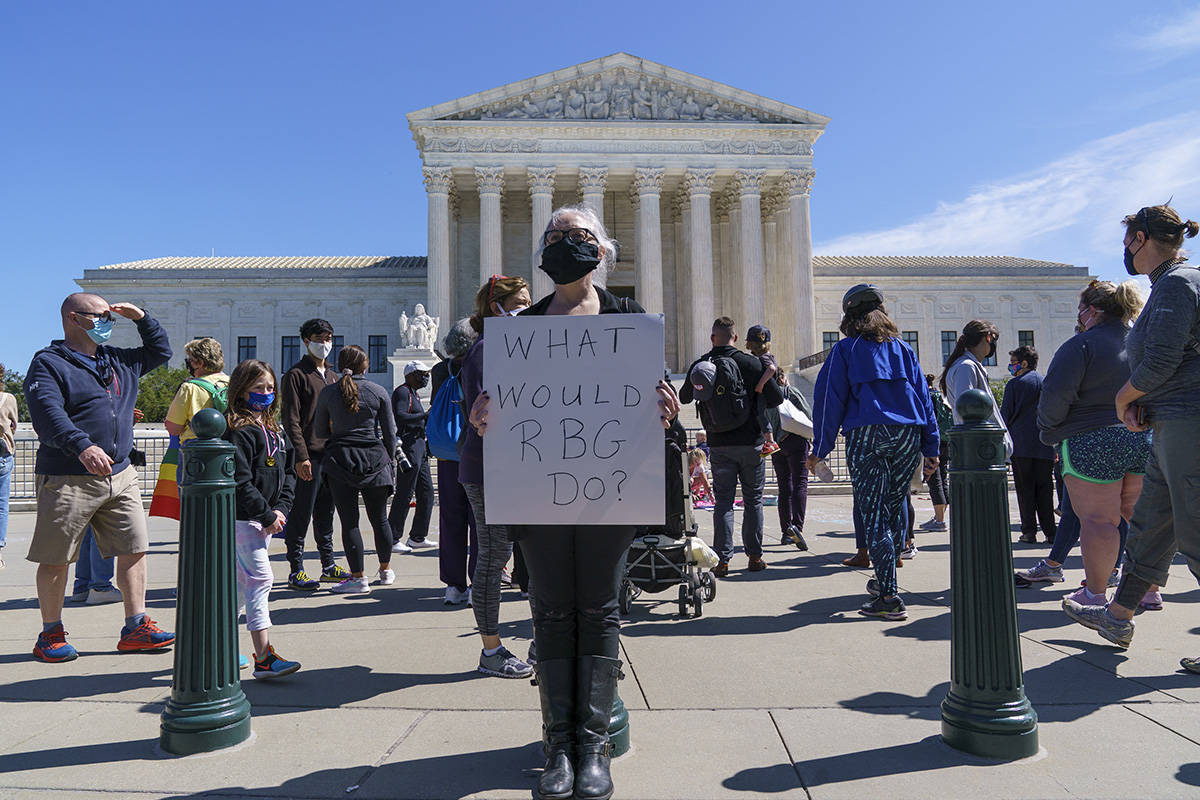Senate battle brewing over process to fill Ginsburg seat
WASHINGTON — After brief reflection on the life of the late Supreme Court Justice Ruth Bader Ginsburg, Republicans and Democrats drew battle lines Saturday over filling her vacancy on the nation’s highest court.
President Donald Trump said he would move expeditiously to nominate someone to fill the vacancy, saying it could happen next week.
“I think the process can go very, very fast. I’ll be making my choice soon, and when my choice is made I’ll be sending it over to Mitch and the Senate, and they will do what they have to do,” Trump said Saturday. “I think we’ll have a very popular choice, whoever it may be.”
Trump also said that nominee could be a woman. “I could see most likely it would be a woman … If somebody were to ask me now, I would say that a woman would be in first place,” he said.
Senate Majority Leader Mitch McConnell, R-Ky., said he would ensure that Trump’s nominee would receive a confirmation vote on the “floor of the United States Senate” this year. McConnell’s statement stands in contrast to the position he took in 2016, when he refused to consider President Barack Obama’s choice for the high court months ahead of the election.
Before Ginsburg’s death, the court was comprised of five justices nominated by Republican presidents and four justices nominated by Democratic presidents. If a Trump nominee filled Ginsburg’s seat, the court would tilt more conservative.
Senate rank and file Democrats, including Nevada Sens. Catherine Cortez Masto and Jacky Rosen, fell in behind Democratic presidential nominee Joe Biden and vice presidential nominee Sen. Kamala Harris, D-Calif., leading the charge to halt an expedited process and fill the seat next year.
“Last night, we mourned, we honored and we prayed for Justice Ruth Bader Ginsburg and her family,” Harris said.
“Well, today, we fight for her legacy,” said Harris, who would become the first Black vice president in history if elected Nov. 3.
Harris paid a visit to the Supreme Court on Saturday where crowds gathered in honor of the second woman justice to sit on the high court.
McConnell pushing forward
McConnell wasted no time Friday in plotting an expedited course for nomination and confirmation while the Republicans control the Senate, which could change after the upcoming election.
Still, there were questions about whether he could muster the votes needed. The GOP has a 53-47 majority and can afford to lose only three votes to confirm a nominee this year. Vice President Mike Pence could break a 50-50 tie and seal confirmation.
Sen. Lisa Murkowski, R-Alaska, said in a Friday interview that she would not vote for a Supreme Court confirmation ahead of the election.
Sen. Susan Collins, R-Maine, who faces a competitive race for re-election, put out a statement Saturday saying that the winner of the Nov. 3 election should select the nominee to fill the post.
And a tape of comments by Sen. Lindsey Graham, R-S.C., made in 2016 before he was Senate Judiciary Committee chairman, argued against a vote on President Barack Obama’s nominee, Merrick Garland.
“I want you to use my words against me,” Graham said.
“If there’s a Republican president in 2016 and a vacancy occurs on the last year of the first term, you can say Lindsey Graham said let the next president, whoever it may be, make that nomination,” Graham said then.
The tape of Graham, who now holds the chairmanship and serves as a gatekeeper to the confirmation, was quickly spread by Democrats who argue against a rush to fill the post.
On Saturday, Graham flipped on his 2016 comments and said he would support Trump “in any effort to move forward regarding the recent vacancy created by the passing of Justice Ginsburg.”
‘Most fervent wish’
Ginsburg, 87, who lost a battle to cancer, has been critical of Trump over the past three years.
In the days preceding her death, The Nation reported that she dictated a statement to her granddaughter that read: “My most fervent wish is that I will not be replaced until a new president is installed.”
A surrogate for the Biden campaign, Rep. Dina Titus, D-Nev., said, “The least we can do to honor her memory is respect her ‘most fervent wish.’ ”
McConnell changed Senate filibuster rules to allow Supreme Court justices to be installed on a straight majority vote. That change followed one by former Senate Majority Leader Harry Reid, D-Nev., during the Obama administration to eliminate the filibuster on judicial appointments for circuit and district judges.
The changes could make it difficult for Democrats to block a confirmation vote.
“Democrats have few measures to stop a confirmation, but they can attempt to persuade the GOP, Trump and the American people to have a mainstream, excellent jurist,” said Carl Tobias, a University of Richmond law professor and an expert on the judiciary.
“There is enough time because there could be a lame duck session after the election,” said Tobias, a founding faculty member of the UNLV William S. Boyd School of Law.
Major election issue
The Supreme Court vacancy is expected to be a prominent issue in the presidential race, just as it was in 2016, when Republicans were successful in blocking Obama’s nominee on the premise that American’s choice in the presidential election should decide who fills the high court seat.
Reid, in a statement released through the Nevada Democratic Party, said, “Each Republican senator must now demonstrate whether previous protests about filling Supreme Court seats during an election year were sincere beliefs or a shameless example of the cynical hyper-partisan grandstanding and obstruction that Americans detest from Washington.”
Graham said Saturday that the two biggest changes in judicial nominations and confirmations came from Democrats.
He cited rule changes initiated by Reid, and a “conspiracy” by Senate Minority Leader Chuck Schumer and the media “to destroy the life of (Justice) Brett Kavanaugh” to hold that Supreme Court seat open. Kavanaugh was accused of sexual assault that occurred decades ago by a woman who came forward during his confirmation hearing.
As the partisan attacks ramp up, political scientists consider the Supreme Court vacancy as a major issue in the election just weeks away.
Exit polling from 2016 showed that people who viewed the Supreme Court vacancy then as an important issue voted heavily for Trump over Hillary Clinton, noted Kevin McMahon, a political science professor at Trinity College in Connecticut.
McMahon said the issue helped Trump garner support of evangelicals and conservative Catholics who may have been put off by his personal behavior.
Trump “could motivate people to the polls based on a promise to nominate a conservative” in 2020, McMahon said.
But McMahon pointed to a Pew Research poll this year that showed the Supreme Court is more likely a key voting issue to Democrats and moderates.
Ginsburg was considered a hero by progressives, and by women, who were instrumental in the Democratic takeover of the House in 2018. She was hailed for her advocacy of women’s rights and equality for all.
The filling of her seat “could certainly galvanize the left,” McMahon said.
A previous version of this story incorrectly reported the number of votes Senate Republicans could lose and still confirm a Supreme Court nominee.
Contact Gary Martin at gmartin@reviewjournal.com or 202-662-7390. Follow @garymartindc on Twitter.


























